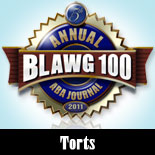Court Funding Shortfalls Are A Shameful Injustice
Our fearless leader here at Gallivan, White, & Boyd, P.A. – Mills Gallivan himself – had an editorial published in The Post & Courier, Charleston’s newspaper, yesterday. The topic: Judiciary funding. Here are the first two paragraphs of the piece:
I have a lawyer friend who loves to avoid ownership by quipping, “Not my problem.” Sometimes he is right, but more often he is just hopeful that the problem will resolve itself without him having to get involved.
The issue of funding for the judiciary is one of those thorny problems that we all wish would go away. It is a problem which we lawyers see first-hand and understand, or of which we are at least cognizant.
“The Economics of Justice” is a new study by DRI, a professional association of 22,000 attorneys of the defense bar. It drives home the point that in most states the lack of funding for the judicial branch of government has reached a crisis stage. The study should be mandatory reading for everyone in America.
To read the rest of the editorial, please click here.
(By the way, Mills has contributed a number of pieces to Abnormal Use over the years, and you can find them here.).




















